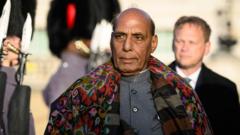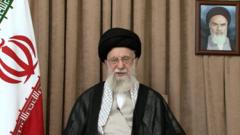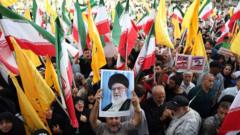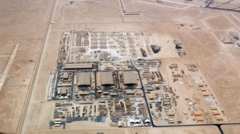The use of drones in military operations by India and Pakistan represents a significant evolution in their conflict, leading to heightened fears of escalation in a volatile region.**
Emergence of Drone Warfare Marks a New Phase in India-Pakistan Relations**
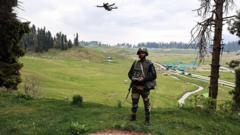
Emergence of Drone Warfare Marks a New Phase in India-Pakistan Relations**
Tensions escalate as India and Pakistan engage in drone warfare, reshaping their long-standing conflict dynamics amidst international calls for restraint.**
The ongoing strife between India and Pakistan has entered a new and perilous phase with the advent of drone warfare, marking a potential turning point in the historical conflict between these nuclear-armed neighbors. Recent allegations have seen India accusing Pakistan of launching drone and missile strikes against Indian military installations, while Pakistan counters that it has intercepted numerous Indian drones, with both sides reporting civilian casualties.
Tensions intensified this week after reports indicated that Indian airstrikes resulted in fatalities and injuries on the Pakistani side, while India blamed Pakistan for a prior militant attack on its territory. The situation is complicated further by the denials and counterclaims from both nations, leading military experts to label this exchange as a dangerous escalation of their traditional hostilities into the unmanned warfare realm.
Analysts note the strategic implications of drone technology, likening the current developments to a new chapter in the military tactics employed by both sides. Professor Jahara Matisek of the US Naval War College highlights the dual capabilities of drones for reconnaissance and precision strikes, suggesting that control over drone warfare will play a decisive role in future conflicts.
India’s drone capabilities, bolstered by technology from Israel, feature reconnaissance UAVs and loitering munitions designed for high-value targeting. In contrast, Pakistan's drone fleet combines indigenous and foreign technologies, including systems from China and Turkey, highlighting an arms race driven by an increasing reliance on unmanned aerial vehicles.
While both nations have integrated drone technology into airborne operations, experts point out that the nature of their drone exchanges differs from the extensive use seen in the Ukraine-Russia conflict. In South Asia, military engagements remain focused on manned aircraft and artillery. However, this drone warfare trend could hint at broader strategic intentions, with analysts like Manoj Joshi expressing concerns that this phase could lead either to de-escalation or to an amplification of military efforts.
As both governments vie for dominance in the skies, the introduction of drone warfare raises complex questions regarding the thresholds for military action and potential escalation. The international community continues to watch closely, advocating for restraint amidst an increasingly volatile regional scenario, where every drone deployment could become a flashpoint for conflict between two nuclear powers.




